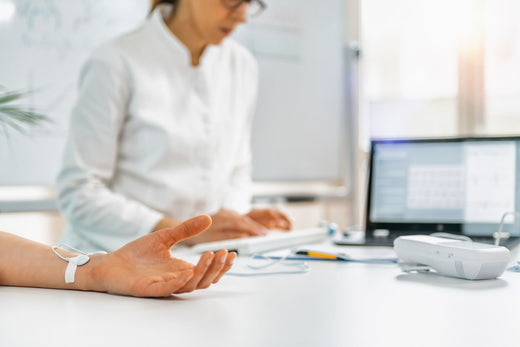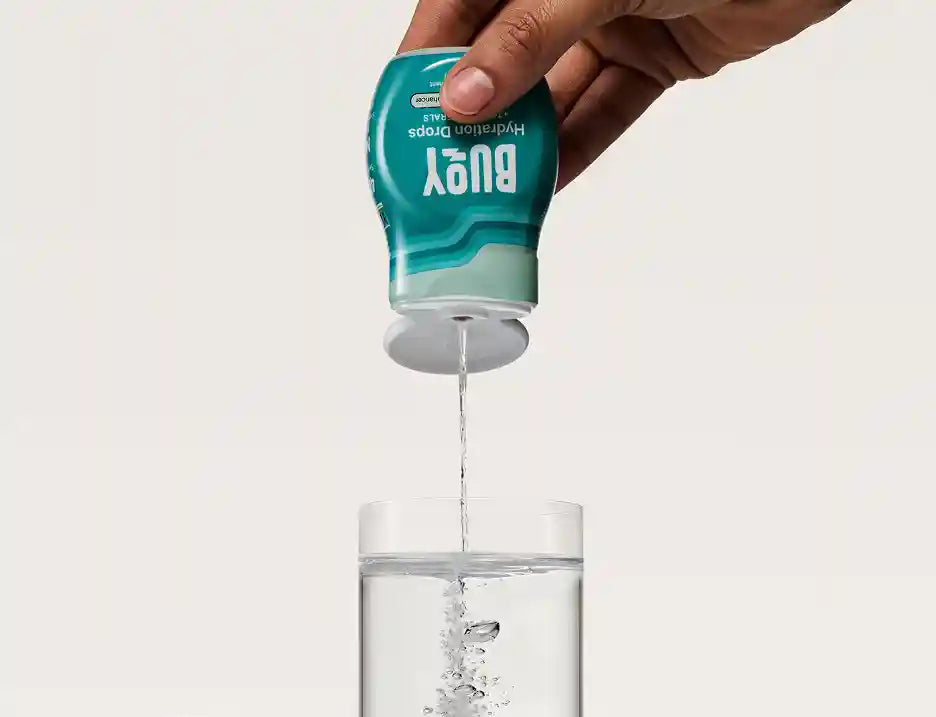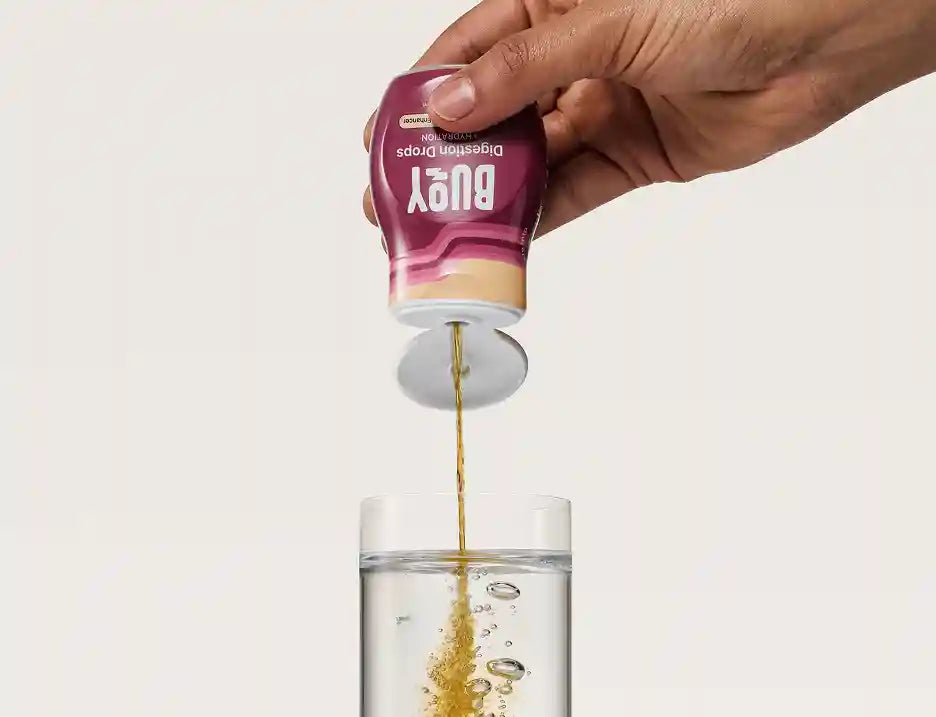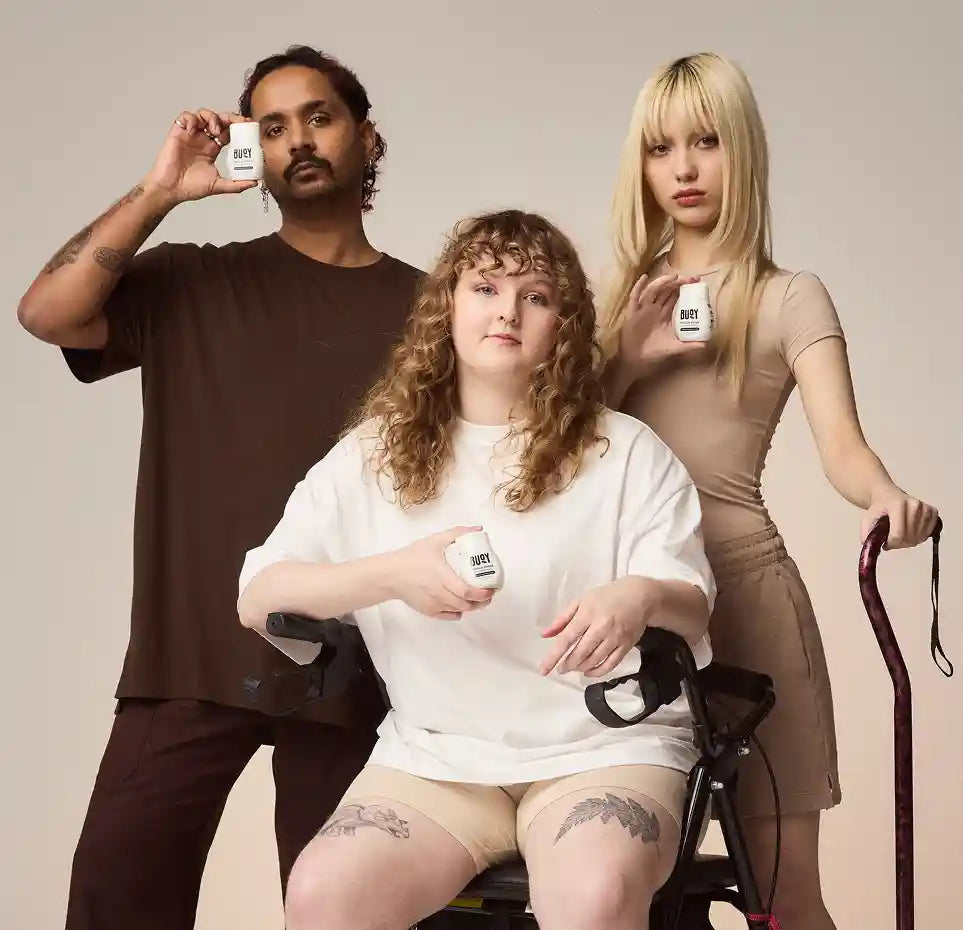
Treatments for POTS: Comprehensive Guide to Managing Symptoms
Do you ever feel like your POTS symptoms are running your life, leaving you desperate for a solution that actually works? Postural Orthostatic Tachycardia Syndrome (POTS) can be an overwhelming condition, with symptoms like dizziness, rapid heartbeat, and chronic fatigue turning everyday tasks into monumental challenges.
But the good news is that effective treatments are available to help you regain control and improve your quality of life. In this comprehensive guide, we'll explore a variety of treatment options designed to manage POTS symptoms.
From lifestyle changes and physical therapies to alternative treatments and mental health support, we'll provide you with the knowledge and tools you need to create a personalized plan that works for you. Whether you're newly diagnosed or have been battling POTS for years, this guide will help you navigate the complex landscape of treatments and find strategies that truly make a difference.
Essential Takeaways:
- Manage POTS with Comprehensive Lifestyle Changes: Implementing dietary changes, maintaining proper hydration, engaging in low-impact exercises, and practicing good sleep hygiene can significantly reduce POTS symptoms and improve daily functioning.
- Get Additional Symptom Relief with Complementary Treatments: Alternative therapies like biofeedback, acupuncture, and yoga, along with wearing compression garments, can help you manage your POTS symptoms by improving circulation, promoting relaxation, and enhancing overall well-being.
Let's dive in and discover the steps you can take to manage your symptoms and start living your life to the fullest.
- Lifestyle Changes
- Physical and Occupational Therapy
- Compression Therapy
- Alternative and Complementary Treatments
- Managing Coexisting Conditions
- Building a Comprehensive Treatment Plan
Lifestyle Changes
When it comes to managing POTS, lifestyle changes can make a world of difference. Let's start with the basics: diet and hydration. Embracing a high-sodium diet might sound counterintuitive, but it's essential for maintaining blood volume and reducing symptoms.
Make sure to stay hydrated throughout the day and avoid triggers like caffeine and alcohol. Trust us, your body will thank you!
What is POTS?
But first thing’s first. If you're not familiar with POTS, it stands for Postural Orthostatic Tachycardia Syndrome, a condition that affects the autonomic nervous system. When someone with POTS stands up, their heart rate increases rapidly, and they may experience a range of symptoms like dizziness, fatigue, and brain fog just to name a few (1).
Are you new to POTS? Find out more about this condition in our comprehensive guide to Postural Orthostatic Tachycardia Syndrome (POTS).
Exercising with POTS
Next up, let's talk about exercise. We know it can be tough to get moving when you're dealing with fatigue and dizziness, but a structured exercise program can work wonders.
Low-impact activities like swimming, recumbent cycling, and gentle yoga are great options. Start slowly and gradually increase the intensity as your body adjusts (1,2). Remember, consistency is key!
Getting Enough Sleep
Finally, don't underestimate the power of good sleep hygiene. We know that POTS can make getting enough quality sleep a real challenge. Symptoms like racing heartbeat, dizziness, and adrenaline surges can make it difficult to fall asleep and stay asleep through the night.
Improving Sleep Quality
But establishing a regular sleep schedule, creating a restful environment, and practicing relaxation techniques can significantly improve your sleep quality. Try winding down with a warm bath, some gentle stretches, or a calming meditation before bed. Experiment with different strategies to find what works best for you (3,4).
And when you wake up feeling refreshed, tackling POTS symptoms becomes a whole lot easier. Remember, it's okay if it takes time to establish a consistent sleep routine – be patient with yourself and celebrate the small improvements along the way.
Physical and Occupational Therapy
Physical therapy is an essential component of POTS treatment. Working with a skilled physical therapist can help you develop a tailored exercise program that targets your specific needs.
Exercises that improve cardiovascular endurance, strengthen leg muscles, and enhance overall fitness are particularly beneficial. Plus, a physical therapist can provide guidance on proper form and technique to prevent injury.
Occupational Therapy
Occupational therapy is another great tool to have in your POTS management toolbox. An occupational therapist can teach you some really useful ways to conserve your energy throughout the day. They’ll work with you to find ways to modify your daily activities, so you can get things done without completely draining yourself (5).
And if you need a little extra help, they can recommend some handy assistive devices, such as jar openers, shower chairs, and mobility aids, that can make your life a bit easier. It’s all about finding what works best for you and your lifestyle, and an occupational therapist can help you figure it all out.

Working with a physical therapy who understands POTS can be an excellent way to treat physical symptoms.
Compression Therapy
Let's not forget about compression therapy! Wearing compression stockings or garments can help improve blood circulation and reduce pooling in the legs.
How Compression Can Help
When you have POTS, your blood vessels may have trouble constricting properly, which can lead to blood collecting in your lower extremities. Compression therapy helps combat this by applying gentle pressure to your legs, encouraging blood to flow back up to your heart.
Compression therapy can help alleviate a range of POTS symptoms, including dizziness, fatigue, and palpitations. By improving blood flow and reducing pooling, compression garments can help you feel more energized and stable throughout the day (6). Plus, they come in a variety of fun colors and patterns, so you can rock your compression in style!
Shopping for Compression Garments
When shopping for compression stockings or garments, look for ones that are breathable, moisture-wicking, and comfortable to wear. Measure your legs in the morning when swelling is minimal to ensure a proper fit.
It might take some trial and error to find the perfect pair, but don't get discouraged! Many brands offer different styles and materials, so you can find one that works best for you.
Wear Them Daily
To get the most benefit from compression therapy, put your stockings or garments on first thing in the morning before any swelling occurs. It can be a bit of a struggle at first, but there are handy tools like stocking donners and gloves that can make the process easier. If you're having trouble, don't hesitate to ask for help from a loved one or a healthcare professional.
Alternative and Complementary Treatments
While lifestyle changes and traditional therapies are the foundation of POTS treatment, alternative and complementary approaches can provide additional support. Dietary supplements like electrolytes, vitamins, and minerals may help alleviate symptoms and improve overall health.
Just be sure to consult with your healthcare provider before starting any new supplement regimen.
Natural Treatments for POTS
In addition to lifestyle changes and traditional therapies, there are several natural treatments for POTS that can help manage symptoms and improve overall well-being. These approaches focus on promoting relaxation, reducing stress, and enhancing circulation.
Acupuncture
Acupuncture is one such natural treatment that may help reduce POTS symptoms by regulating the autonomic nervous system. This ancient Chinese practice involves inserting thin needles into specific points on the body to promote healing and balance.
Some studies suggest that acupuncture may help reduce POTS symptoms by regulating the autonomic nervous system. Acupuncture has been shown to influence autonomic functions, including blood pressure, heart rate, and heart rate variability, which are often dysregulated in POTS patients (7).
If you're interested in trying acupuncture, look for a qualified practitioner who has experience working with POTS patients.
Yoga and Meditation
Yoga and meditation are also powerful natural treatments for managing POTS. Gentle yoga poses can improve circulation, increase strength and flexibility, and promote relaxation. Mindfulness practices like deep breathing and meditation can help reduce stress and anxiety, which are common companions of POTS (8).
Incorporating these practices into your daily routine can have a profound impact on your overall well-being. However, be sure to consult with your healthcare provider before starting any new treatment regimen to ensure it is safe and appropriate for your specific condition.
Biofeedback
Biofeedback is another alternative treatment that can be particularly useful for managing POTS symptoms. This technique uses sensors to measure your body's functions, such as heart rate and breathing. With the help of a therapist, you can learn to control these functions and reduce symptoms like dizziness or anxiety.
Biofeedback provides real-time feedback from your body, similar to learning to meditate but with the added bonus of visual and auditory cues from the biofeedback equipment (9). By gaining more control over your physiological responses, you can better manage your POTS symptoms and improve your overall well-being.
Did you know that diet can have a huge impact on how you feel with POTS? Learn more in our POTS Diet and Nutrition Guide.

Alternative therapies like yoga, meditation, and acupuncture can be powerful tools for managing POTS by improving circulation, strength, and relaxation.
Managing Coexisting Conditions
Many people with POTS also have coexisting conditions like autoimmune disorders or connective tissue disorders. If you're one of them, it's important to take a holistic approach to treatment. Work closely with your healthcare team to develop a comprehensive plan that addresses all aspects of your health.
Autoimmune and Connective Tissue Disorders
For those with autoimmune disorders, immunosuppressive medications or lifestyle modifications may be necessary to manage symptoms alongside POTS. If you have a connective tissue disorder like Ehlers-Danlos Syndrome, focusing on joint stability, pain management, and preventing complications is key (10,11).
Mental Health Matters
Don't forget about your mental health! Living with a chronic condition like POTS can be emotionally taxing. Seeking support from a therapist or counselor can help you cope with the challenges and maintain a positive outlook. If you're experiencing anxiety, depression, or other mental health concerns, don't hesitate to reach out for help.
Building a Comprehensive Treatment Plan
Managing POTS effectively requires a multidisciplinary approach. Building a team of healthcare providers who understand your condition and work collaboratively is essential. Your team may include a primary care physician, cardiologist, neurologist, physical therapist, occupational therapist, and mental health professional.
Finding the Right Treatment Plan for You
Remember, there is no one-size-fits-all approach to treating POTS. The most effective treatments for POTS will vary from person to person, depending on the severity of their symptoms, underlying causes, and coexisting conditions.
That's why it's so important to work closely with your healthcare team to develop a personalized treatment plan that addresses your unique needs
Working with Your Healthcare Team
Together, you and your healthcare team can create a personalized treatment plan that addresses your unique needs and goals. Regularly assess your progress and make adjustments as needed. Remember, managing POTS is a journey, and it's okay to take it one step at a time.

Just one squeeze of Buoy Rescue Drops provides more electrolytes than a sports drink, making it an effective solution for managing POTS symptoms. Use 4-7 times daily for best results.
References:
- Cleveland Clinic. (2022). Postural Orthostatic Tachycardia Syndrome (POTS). Retrieved from https://my.clevelandclinic.org/health/diseases/16560-postural-orthostatic-tachycardia-syndrome-pots
- Standing Up to POTS. (n.d.). Lifestyle Modifications. Retrieved from https://www.standinguptopots.org/POTSlifestylemodifications
- Bagai, K., Song, Y., Ling, J. F., Malow, B., Black, B. K., Biaggioni, I., Robertson, D., & Raj, S. R. (2011). Sleep Disturbances and Diminished Quality of Life in Postural Tachycardia Syndrome. Journal of Clinical Sleep Medicine, 7(2), 204–210. Retrieved from https://www.ncbi.nlm.nih.gov/pmc/articles/PMC3077350/
- POTS UK. (n.d.). Important Lifestyle Changes: Sleep. Retrieved from https://www.potsuk.org/managingpots/sleep/
- Fu, Q. & Levine, B. D. (2018). Exercise and Non-Pharmacological Treatment of POTS. Autonomic Neuroscience: Basic & Clinical, 215, 20–27. Retrieved from https://www.ncbi.nlm.nih.gov/pmc/articles/PMC6289756/
- Bourne, K. M., Sheldon, R. S., Hall, J., Lloyd, M., Kogut, K., Sheikh, N., Jorge, J., Ng, J., Exner, D. V., Tyberg, J. V. & Raj, S. R. (2021). Compression Garment Reduces Orthostatic Tachycardia and Symptoms in Patients with Postural Orthostatic Tachycardia Syndrome. Journal of the American College of Cardiology, 77(3), 285–296. Retrieved from https://pubmed.ncbi.nlm.nih.gov/33478652/
- Li, Q. Q., Shi, G. X., Xu, Q., Wang, J., Liu, C. Z., & Wang, L. P. (2013). Acupuncture Effect and Central Autonomic Regulation. Evidence-Based Complementary and Alternative Medicine: eCAM, 2013, 267959. Retrieved from https://www.ncbi.nlm.nih.gov/pmc/articles/PMC3677642/
- Raj, V., Opie, M., & Arnold, A. C. (2018). Cognitive and Psychological Issues in Postural Tachycardia Syndrome. Autonomic Neuroscience: Basic & Clinical, 215, 46–55. Retrieved from https://www.ncbi.nlm.nih.gov/pmc/articles/PMC6160364/
- The POTS Treatment Center. (n.d.). Services. Retrieved from https://www.potstreatmentcenter.com/services/
- Grigoriou, E., Boris, J. R., & Dormans, J. P. (2015). Postural Orthostatic Tachycardia Syndrome (POTS): Association with Ehlers-Danlos Syndrome and Orthopaedic Considerations. Clinical Orthopaedics and Related Research, 473(2), 722–728. Retrieved from https://www.ncbi.nlm.nih.gov/pmc/articles/PMC4294907/
- Li, H., Yu, X., Liles, C., Khan, M., Vanderlinde-Wood, M., Galloway, A., Zillner, C., Benbrook, A., Reim, S., Collier, D., Hill, M.A., Raj, S.R., Okamoto, L.E., Cunningham, M.W., Aston, C.E. & Kem, D.C. Autoimmune Basis for Postural Tachycardia Syndrome. Journal of the American Heart Association, 2014 Feb 26;3(1):e000755. doi: 10.1161/JAHA.113.000755. Retrieved from https://pubmed.ncbi.nlm.nih.gov/24572257/




